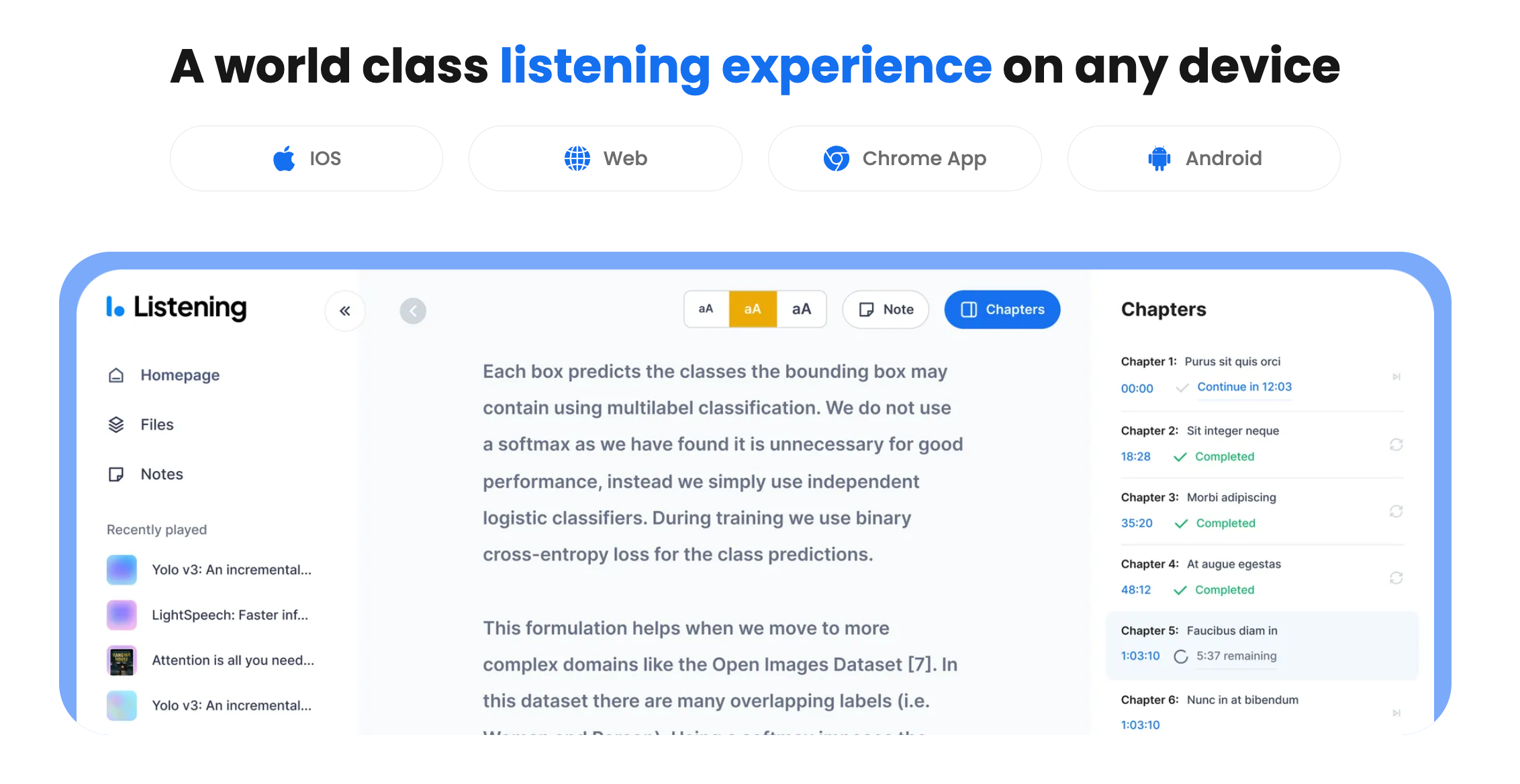Artificial intelligence is no longer the stuff of science fiction – it’s a reality that is transforming our world in profound ways. From the virtual assistants in our smartphones to the recommendation engines powering our favorite streaming services, artificial intelligence is becoming an integral part of our daily lives.
However, the applications of artificial intelligence extend far beyond consumer convenience. Across industries like healthcare, finance, education, transportation, and more, AI is driving unprecedented efficiency and innovation.
As the AI revolution accelerates, it’s clear that this game-changing technology will reshape virtually every aspect of society and the economy in the coming years.
In this post, we’ll demystify artificial intelligence by exploring what it is, how it works under the hood, and 5 of the most impactful benefits and applications you need to know about.
Whether you’re a business leader, tech enthusiast, or simply someone curious about one of the most important technologies of our time, read on to learn why artificial intelligence matters and how it’s transforming the world as we know it.
What is AI? Why Does It Matter?
Artificial intelligence refers to developing computer systems that can perform tasks that typically require human intelligence, such as visual perception, speech recognition, decision-making, and language translation.
While the concept of artificial intelligence has been around since the 1950s, it’s only in recent decades that the field has begun to realize its enormous potential. The rapid progress in AI can be attributed to several key factors, including the explosion of big data, the advent of powerful computing hardware like GPUs, and the development of sophisticated deep learning algorithms.
Machine learning is a subfield of AI that involves training computer models to learn and improve from data without being explicitly programmed. Neural networks, inspired by the structure of the human brain, have been particularly game-changing – they can automatically discover patterns and insights in vast amounts of unstructured data.
As artificial intelligence becomes more capable and accessible, its significance cannot be overstated. By automating complex specific tasks, uncovering hidden insights, and enabling data-driven decision-making, artificial intelligence has the potential to dramatically improve efficiency, accuracy, and performance across virtually every industry and domain.
It’s no wonder that investment in artificial intelligence has skyrocketed in recent years, with companies and governments alike pouring billions into AI research and development. As adoption continues to accelerate, it’s clear that artificial intelligence will be one of the most transformative technologies of the 21st century.
5 Applications of Artificial Intelligence
1. Speech Recognition
One of the most prominent applications of artificial intelligence (AI) is speech recognition, which refers to the ability of AI systems to interpret and respond to spoken language. These systems leverage machine learning techniques, particularly deep learning algorithms, and artificial neural networks, to analyze the patterns and nuances of human speech.
By training on vast amounts of audio data, these AI training processes can accurately transcribe spoken words into text and even understand the intent behind those words. Often, this surpasses human intelligence in terms of speed and accuracy.
The development of speech recognition technology has been a major focus of artificial intelligence research in recent years, driven by advances in computing power, the availability of large language models, and the proliferation of AI tools that require natural language processing capabilities.
Today, speech recognition powers many virtual assistants we’ve come to rely on, such as Apple’s Siri, Amazon’s Alexa, and Google Assistant. These AI-driven helpers can understand and respond to voice commands, making it easier than ever to access information, control smart home devices, and manage our schedules hands-free.
Text-to-Speech
The inverse of speech recognition is text-to-speech, where generative AI tools produce human-like speech from written text. These systems employ deep neural networks to analyze the structure and meaning of input text, and then generate corresponding audio output that mimics natural human speech patterns.
Text-to-speech has numerous applications, from enabling more natural-sounding virtual assistants to making digital content accessible to visually impaired users.

Beyond consumer applications, speech recognition is also transforming industries like healthcare, where it’s being used to automate medical transcription and documentation.
Speech Recognition in Healthcare
By converting doctor-patient conversations and medical notes into structured text data, speech recognition can help reduce human error, streamline clinical workflows, and free up healthcare providers to focus on patient care.
Other applications of speech recognition include voice-controlled navigation systems, automated customer service chatbots, and dictation software that enables hands-free writing.
However, despite the impressive capabilities of modern speech recognition systems, they are not infallible. Like other artificial intelligence applications, speech recognition models can be biased or make mistakes based on the data they were trained on and may struggle with accents, background noise, or complex language structures.
As such, some use cases may still require human intervention or oversight to ensure accuracy and appropriate interpretation.
Nonetheless, the rapid advancement of speech recognition technology represents a major milestone in the field of artificial intelligence, with far-reaching implications for how we interact with machines and consume information.
As research continues to push the boundaries of what’s possible with machine learning and natural language processing, we can expect speech recognition to become an increasingly ubiquitous and powerful tool across different domains.
From enabling more natural human-computer interactions to unlocking new insights from unstructured audio data, the potential applications of speech recognition will likely play a key role in shaping the future of AI research and innovation.
2. Data Analytics
Another domain where artificial intelligence is driving transformative impact is data analytics. With the explosion of big data in recent years, organizations across industries are sitting on vast troves of information that could hold the key to valuable insights and better decision-making.
However, making sense of such massive and complex datasets often exceeds the capabilities of traditional analytical tools and techniques.
That’s where artificial intelligence and machine learning come in – these technologies can quickly process and analyze huge volumes of structured and unstructured (unlabeled) data, uncovering hidden patterns, trends, and correlations that would be difficult or impossible for humans to discern on our own.
Machine learning algorithms, such as neural networks, are trained on large amounts of labeled training data to learn patterns and make predictions or decisions without being explicitly programmed.
Natural language processing, a subfield of artificial intelligence, enables computer systems to understand, interpret, and generate human language. This opens up new possibilities for analyzing unstructured and unlabeled text data.
Generative AI tools can even create new data points that mimic real-world examples, augmenting datasets and improving AI models.

Predictive Analytics
Predictive analytics, for example, can forecast future outcomes based on historical patterns. This helps organizations anticipate and prepare for challenges and opportunities.
Scientists and AI researchers can also harness artificial intelligence to analyze vast amounts of experimental data and identify promising areas for further investigation to accelerate the pace of discovery and innovation.
Compared to manual analysis or traditional statistical methods, AI-driven data analytics can deliver results with unprecedented speed, scale, and granularity to give organizations a powerful competitive advantage.
As data continues to proliferate and AI capabilities advance, the potential applications and benefits of intelligent analytics will only continue to grow.
3. Cybersecurity
In today’s increasingly digital world, cybersecurity threats are becoming more sophisticated and prevalent. From malware and phishing scams to data breaches and ransomware attacks, organizations of all sizes face a constantly evolving landscape of cyber risks.
Traditional cybersecurity defenses often struggle to keep pace with these threats, as they rely on predefined rules and signatures that can quickly become outdated and are prone to human error.
However, artificial intelligence is emerging as a powerful tool in the fight against cybercrime.
With machine learning algorithms and deep learning models, AI systems learn and analyze vast amounts of data from network traffic, user behavior, and other sources to identify patterns and anomalies that are indicative of potential threats.
These AI models can detect subtle signs of a phishing attempt, such as suspicious email content or sender behavior, and flag it for further investigation.
Natural language processing enables AI to understand and interpret the content of emails, chat messages, and other communications, helping to identify social engineering tactics and other threats that may evade traditional filters.
Moreover, AI-powered cybersecurity systems can respond to threats in real-time, automatically isolating infected devices or blocking malicious traffic to prevent further damage. In these instances, the situation does not require human intervention.
Generative AI
Computer vision techniques can also be applied to detect visual-based threats, such as fake websites or malicious ads. Generative AI tools can even create decoy systems or honeypots that lure attackers away from real assets.
Because AI is continuously learning and adapting based on new data, it can keep up with the ever-changing tactics of cybercriminals in a way that would be impossible for human intelligence alone.
Organizations can significantly bolster their defenses against cyber attacks by implementing AI-driven cybersecurity measures, reducing the risk of costly breaches and reputational damage.
4. Image Recognition
Another area where artificial intelligence is making significant strides is image recognition. Thanks to advances in machine learning, computer vision, and deep neural networks, AI systems can now accurately identify, classify, and describe objects, people, text, and other elements within images and videos.
These AI models are trained on vast amounts of labeled data, allowing them to learn and generalize from examples in a way that mimics human visual perception.
One of the most widespread applications of AI-powered image recognition is facial recognition, which is used for everything from unlocking smartphones (like Apple’s Face ID) to enhancing security in public spaces.
Self-Driving Cars with Artificial Intelligence
Self-driving cars rely heavily on computer vision and image recognition to navigate roads, detect obstacles, and read traffic signs. In healthcare, AI algorithms are used to analyze medical images like X-rays and MRIs, helping radiologists detect abnormalities and make more accurate diagnoses.
Other applications of image recognition include visual search (e.g. identifying products in online images), content moderation (e.g. flagging inappropriate or offensive images), and augmented reality(e.g. overlaying digital information onto real-world scenes).
As AI techniques like deep learning continue to advance, the accuracy and efficiency of image recognition will only improve.
The benefits of AI-driven image recognition are numerous. Automating specific tasks that previously required human intervention can save time, reduce errors, and improve consistency.
In security and surveillance applications, it can help identify potential threats or persons of interest more quickly and accurately than human operators. In fields like healthcare and transportation, artificial intelligence has the potential to enhance safety and efficiency greatly.
However, it’s important to recognize that AI systems for image recognition are not infallible. They can still make mistakes or exhibit biases based on the data they were trained on.
As such, ongoing research and development are needed to refine these AI models, expand the diversity and representativeness of training data, and ensure they are being used ethically and responsibly.
Nonetheless, the rapid progress in AI-powered image recognition represents a major milestone in artificial intelligence, with far-reaching implications for various industries and applications.
5. Predictive Modeling

One of the most powerful applications of artificial intelligence is predictive modeling, which involves using machine learning techniques to analyze historical data and generate accurate forecasts of future events or outcomes.
By training AI models on vast amounts of data, these systems can learn to identify complex patterns with multiple layers and relationships that may be difficult or impossible for human capabilities to discern.
The process of building a predictive model typically involves several key steps. First, relevant data is collected and preprocessed to ensure it is clean, consistent, and properly formatted.
Next, the data is split into training and testing sets, with the training data used to teach the AI algoriths and the testing data used to evaluate its performance.
The model is then trained using different machine learning algorithms, such as deep neural networks or decision trees, which iteratively refine the model’s parameters until it can accurately map input data to desired outputs.
Once trained, a predictive model can be applied to new data to generate forecasts or recommendations.
For example, in stock trading, machine learning and deep algorithms can analyze market data to predict future price movements and inform investment decisions. In weather forecasting, machine learning models can process vast amounts of meteorological data to generate highly accurate and detailed predictions of temperature, precipitation, and other variables.
In industrial settings, predictive maintenance models can analyze sensor data from equipment to anticipate failures and schedule repairs before breakdowns occur.
The benefits of AI-powered predictive modeling are significant.
By enabling organizations to make data-driven decisions and optimize their strategies based on objective insights, these tools can help improve efficiency, reduce costs, and drive innovation.
In fields like healthcare, predictive models can help identify patients at risk of certain diseases or complications, allowing for earlier interventions and better outcomes. And in areas like crime prevention and disaster response, AI can help anticipate and mitigate potential threats or hazards.
Artificial Intelligence Fueling Progress to the Future
In conclusion, artificial intelligence (AI) is a rapidly advancing field that includes machine learning, natural language processing, deep neural networks, and computer vision. By training AI models on large datasets and using powerful computing resources, researchers create intelligent systems that can perform complex tasks, generate insights, and even surpass human intelligence in some areas.
The five key AI applications we’ve discussed – speech recognition, data analytics, cybersecurity, image recognition, and predictive modeling – show AI’s immense potential to transform industries, improve decisions, and drive innovation. As artificial intelligence matures and becomes more widely adopted, its impact will only grow.
However, AI is not perfect, and there are challenges and ethical considerations to address as the technology advances. We must ensure the fairness and transparency of artificial intelligence algorithms and protect against unintended consequences and malicious uses.
Despite these challenges, the future of AI is exciting. As researchers push the boundaries of machine intelligence, we can expect breakthroughs across fields like healthcare, education, finance, and transportation. As more people embrace artificial intelligence, it will become an integral part of our daily lives.
Whether you’re a business leader looking to harness artificial intelligence for competitive advantage, a researcher exploring machine learning and natural language processing, or someone curious about technology’s future, one thing is clear: artificial intelligence is here to stay, and its potential to transform our world is vast.
As we develop AI technologies, build powerful computer systems and AI systems, and unlock insights from data, we can look forward to a future where intelligent machines work with humans to solve challenges and create opportunities for progress.








